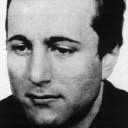
d: 1983
Karel Charva
Summary
Name:
Karel CharvaYears Active:
1983Status:
DeceasedClass:
Mass MurdererVictims:
5Method:
ShootingDeath:
June 03, 1983Nationality:
Czechoslovakia
d: 1983
Karel Charva
Summary: Mass Murderer
Name:
Karel CharvaStatus:
DeceasedVictims:
5Method:
ShootingNationality:
CzechoslovakiaDeath:
June 03, 1983Years Active:
1983bio
Karel Charva was born in Prague, Czechoslovakia, and lived under communist rule during the Cold War. He was a follower of liberal reformer Alexander Dubček and fled his homeland in 1968 following the Soviet-led invasion that ended the Prague Spring. Seeking political asylum, Charva resided in a refugee camp in Zirndorf, West Germany, and was granted political refugee status in 1971.
He claimed to be a psychologist and expressed aspirations to become a teacher. Charva relocated to Mörfelden-Walldorf and later to Darmstadt, where he initially worked as a taxi driver. In 1976, he was arrested and convicted for a bizarre act of sabotage — loosening the wheel nuts on two cars. The motive behind this act was never fully clarified, though some speculated it had a political dimension.
By 1981, Charva had moved to Frankfurt, where he took a job as a security guard. Neighbors described him as quiet and reclusive, often staying up all night typing and poring over academic materials, apparently still trying to fulfill his ambition of becoming a teacher. He was also a registered member of a gun club and legally purchased the two firearms used in the shooting that same year. In the final weeks before the massacre, acquaintances reported observing a noticeable increase in his aggression and instability.
Though Charva presented a façade of discipline and self-improvement, his inability to progress professionally, combined with a history of social isolation, may have fueled mounting resentment and psychological distress. While no definitive motive has ever been established, authorities and journalists later speculated that Charva was driven by pent-up frustration and disillusionment.
murder story
On the morning of 3 June 1983, Karel Charva carried out what would become one of West Germany’s deadliest school shootings. At approximately 7:20 a.m., he rented a Volkswagen panel van in Frankfurt and set out in apparent search of a school that remained open despite the national holiday. By chance, he arrived at the Freiherr-vom-Stein Gesamtschule in Eppstein-Vockenhausen, about 30 kilometers northwest of Frankfurt.
He parked his vehicle near the school grounds, leaving behind 160 rounds of ammunition, a bag, and a pair of handcuffs. Armed with two semi-automatic pistols — a 9×19mm Smith & Wesson Model 59 and a 7.65mm Astra pistol — and seven additional magazines, he entered the school building. At approximately 10:45 a.m., Charva walked into Room 213, where English teacher Franz-Adolf Gehlhaar was conducting a sixth-grade class.
Charva initially fired at Gehlhaar and missed, exited the room, then reentered seconds later. As the teacher tried to protect his students and pleaded for their lives, Charva shot Gehlhaar seven times, hitting him in the stomach, face, and arm. He then opened fire on the students, killing three children — Stephanie Hermann (12), Javier Martinez (11), and Gabriele Siebert (12) — and injuring thirteen others, four of them critically.
Hearing the gunfire, teacher Hans-Peter Schmitt rushed to the classroom to intervene and was fatally shot. Gisbert Beck, a 45-year-old unarmed police officer present at the school to conduct a traffic safety lesson, was also killed in the attack.
Police arrived shortly thereafter and attempted to negotiate with the gunman. However, Charva continued shooting and retreated into a nearby classroom. At approximately 11:15 a.m., he turned the gun on himself and committed suicide by shooting himself in the mouth. An autopsy later revealed that he had been under the influence of alcohol at the time of the attack.
In total, Charva fired approximately 40 rounds during the shooting. He killed five people and injured another 14. Additionally, at least 30 students suffered from psychological shock as a result of the incident.
The Eppstein school shooting remains one of the worst mass shootings in Germany’s post-war history. Though speculation about Charva’s motive pointed toward accumulated rage, academic failure, and deep-seated mental distress, no manifesto or written explanation was ever recovered. His death brought an abrupt end to the investigation and left many questions unanswered about how a once-hopeful refugee and aspiring teacher became a mass murderer.